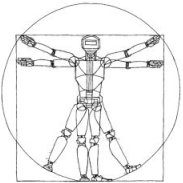Robotics: Science and Systems II
Self-supervised Monocular Road Detection in Desert Terrain
H. Dahlkamp, A. Kaehler, D. Stavens, S. Thrun, G. BradskiAbstract: We present a method for identifying drivable surfaces in difficult unpaved and open terrain conditions as encountered in the DARPA Grand Challenge robot race. Instead of trying to learn an a-priori road appearance model, this method uses laser range finder and pose estimation information to identify a nearby patch of drivable surface and then extrapolates that drivable area outward. Due to power limitations, lasers are only able to see the near range in front of the car. Vision takes a near patch of drivable road found by laser and uses it to construct appearance models to find drivable surface outward into the far range. This information is put into a drivability map for the vehicle path planner. The method was proven by an algorithm scoring framework run on real-world data. Using this system, our robot won the DARPA Grand Challenge and post-race logfile analysis proves that without the computer vision algorithm it could not have driven fast enough to win.
Bibtex:
@INPROCEEDINGS{ Dahlkamp-RSS-06,
AUTHOR = {H. Dahlkamp and A. Kaehler and D. Stavens and S. Thrun and G. Bradski},
TITLE = {Self-supervised Monocular Road Detection in Desert Terrain},
BOOKTITLE = {Proceedings of Robotics: Science and Systems},
YEAR = {2006},
ADDRESS = {Philadelphia, USA},
MONTH = {August},
DOI = {10.15607/RSS.2006.II.005}
}
